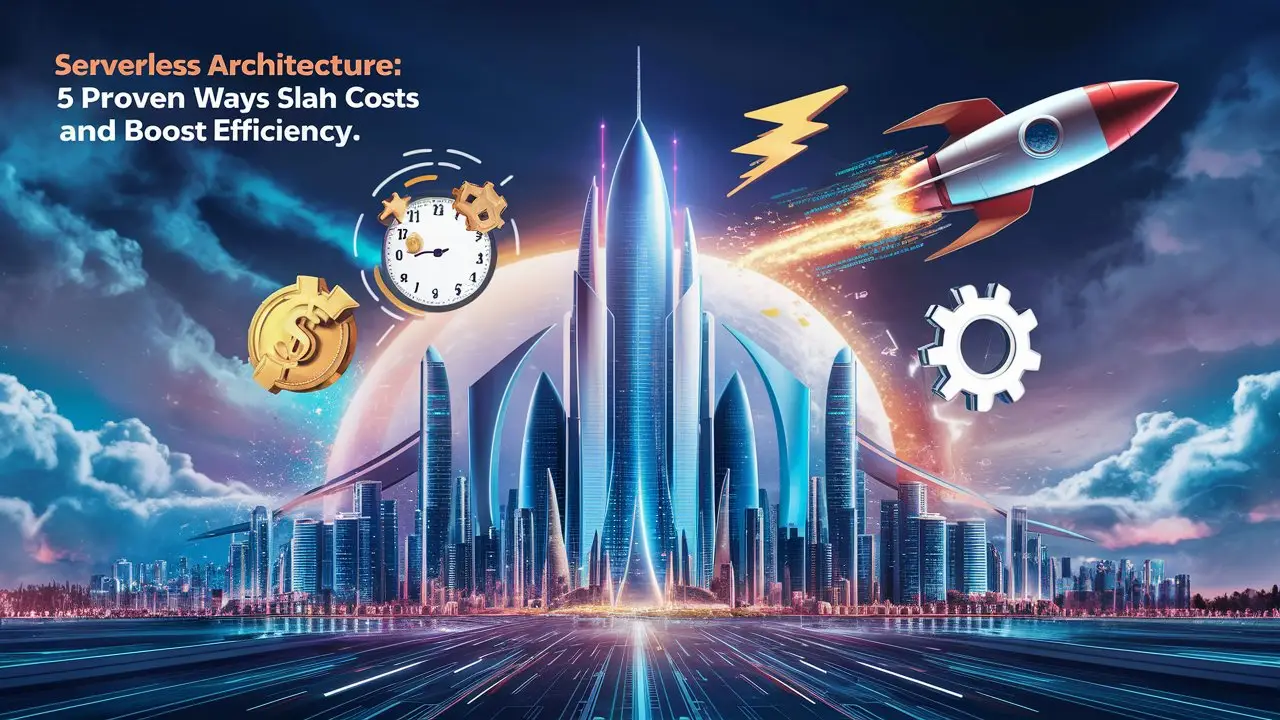
Introduction
Landing Page: https://be.elementor.com/visit/?bta=205378&nci=5619In today’s fast-paced digital world, businesses are constantly seeking innovative ways to optimize their operations, reduce costs, and enhance efficiency. It has emerged as a game-changer, offering a compelling solution to these challenges. In this blog post, we will explore the fundamentals of serverless computing and architecture and delve into five proven strategies to leverage this technology to achieve significant cost savings and efficiency gains.
Understanding Serverless Computing
What is Serverless Architecture?
Despite its name, This doesn’t mean no servers are involved. Instead, it refers to a cloud-computing execution model where the cloud provider dynamically manages the infrastructure. Developers focus solely on writing code without worrying about server management, scaling, or maintenance.
The Evolution of Serverless Computing
The concept of serverless computing evolved as cloud providers began offering solutions that abstract the complexities of managing infrastructure. Initially, companies had to manage physical servers, then virtual machines, and eventually containers. Serverless takes this a step further by allowing developers to execute code without managing any underlying infrastructure.
Benefits of Serverless Architecture
It offers numerous benefits, including cost savings, automatic scaling, and a reduction in maintenance overhead. By leveraging serverless solutions, companies can focus on their core competencies and accelerate their time to market.
Basics of Serverless Architecture
How Does Serverless Architecture Work?
Serverless architecture operates on a pay-per-use model. When an event triggers a function, the cloud provider allocates the necessary resources, executes the function, and then scales down, ensuring no resources are wasted. This model eliminates the need to provision and manage servers, significantly reducing operational complexity.
Key Components of Serverless Architecture
Functions as a Service (FaaS)
FaaS allows developers to deploy individual functions that are executed in response to specific events. These stateless and ephemeral functions, make them ideal for tasks like data processing, APIs, and automation.
Backend as a Service (BaaS)
BaaS provides developers with pre-built backend services like databases, authentication, and storage. This allows developers to focus on the front-end and business logic without worrying about the backend infrastructure.
Differences Between Serverless and Traditional Architecture
Traditional architecture requires provisioning and managing servers, which involves significant upfront costs and ongoing maintenance. In contrast, serverless architecture shifts the responsibility to the cloud provider, allowing companies to pay only for the computing resources they use.
Landing Page: https://be.elementor.com/visit/?bta=205378&nci=56995 Proven Ways to Slash Costs with Serverless Architecture
1. Pay-per-Use Pricing Model
One of serverless architecture’s most significant cost-saving benefits is its pay-per-use pricing model. Unlike traditional servers that require payment regardless of usage, serverless solutions charge only for the actual computing time used.
Lower Infrastructure Costs
With serverless, there’s no need to maintain expensive infrastructure. The cloud provider handles everything, which means no upfront hardware costs and lower ongoing expenses.
Elimination of Idle Server Costs
Traditional servers often run even when not in use, leading to wasted resources and higher costs. Serverless architecture eliminates this issue by automatically scaling resources based on demand, ensuring you only pay for what you use.
2. Auto-Scaling Capabilities
Serverless architecture automatically scales to meet demand, ensuring optimal performance during traffic spikes without manual intervention.
Automatic Resource Allocation
The serverless model automatically allocates resources based on incoming requests, eliminating the need for manual scaling and reducing the risk of overprovisioning.
Reducing Overprovisioning
Overprovisioning is a common issue with traditional servers, where resources are allocated based on peak demand, leading to unnecessary costs. Serverless architecture adjusts resources in real time, reducing waste and optimizing costs.
3. Reduced Maintenance Overhead
With serverless architecture, maintenance responsibilities shift from the developer to the cloud provider, freeing up time and resources for innovation.
Less Time Spent on Server Management
Server management is time-consuming and requires specialized knowledge. Serverless architecture reduces this burden, allowing developers to focus on writing code and delivering features.
Focus on Development and Innovation
By reducing the need for server management, developers can concentrate on creating new features and improving user experiences, leading to faster development cycles and greater innovation.
4. Efficient Resource Utilization
Serverless architecture maximizes resource efficiency by allocating exactly what’s needed for each function, reducing waste and optimizing performance.
Maximizing Resource Efficiency
Serverless solutions allocate resources on-demand, ensuring that only the necessary computing power is used, which leads to significant cost savings and better overall efficiency.
Streamlined Operations
With serverless architecture, operations are streamlined because there’s no need to manage servers, scale resources manually, or worry about infrastructure maintenance. This leads to more efficient workflows and quicker deployment times.
5. Enhanced Productivity and Speed
Serverless architecture accelerates development and deployment, enabling companies to bring products to market faster and more efficiently.
Faster Time to Market
With less time spent on infrastructure management, developers can focus on coding and deploying features, leading to faster time to market and a competitive edge.
Agile Development Processes
Serverless architecture supports agile development by enabling continuous integration and continuous deployment (CI/CD) practices, allowing teams to iterate quickly and respond to market changes with agility.
Boosting Efficiency with Serverless Architecture
Optimizing Performance with Serverless
Serverless architecture offers real-time scalability and event-driven architecture, making it ideal for applications that require rapid response times and high availability.
Real-Time Scalability
Serverless solutions automatically scale to handle increasing loads, ensuring that applications remain responsive and performant, even during traffic spikes.
Event-Driven Architecture
Serverless architecture is inherently event-driven, meaning it responds to specific triggers and events. This allows for efficient and scalable handling of various tasks, from data processing to user interactions.
Serverless Security Considerations
While serverless architecture offers built-in security features, it’s essential to follow best practices to ensure secure applications.
Built-In Security Features
Cloud providers offer built-in security features such as encryption, access control, and monitoring, reducing the burden on developers to implement security measures from scratch.
Best Practices for Secure Serverless Applications
To ensure security in serverless applications, developers should follow best practices such as minimizing permissions, using secure coding practices, and regularly auditing and monitoring applications.
Use Cases of Serverless Architecture
Serverless architecture is versatile and can be used across various industries to solve complex problems efficiently.
Real-World Examples
Companies like Netflix, Coca-Cola, and Airbnb have successfully implemented serverless architecture to streamline operations, reduce costs, and improve scalability.
Industries Benefiting from Serverless Solutions
Industries such as finance, healthcare, and e-commerce are leveraging serverless architecture to enhance their digital offerings, improve customer experiences, and stay competitive in a rapidly changing market.
Conclusion
The Future of Serverless Computing
Serverless computing is poised to revolutionize how companies approach cloud infrastructure. As technology continues to evolve, serverless architecture will likely become the standard for modern applications.
Check out my other Cloud Computing Blogs. Click Here.
